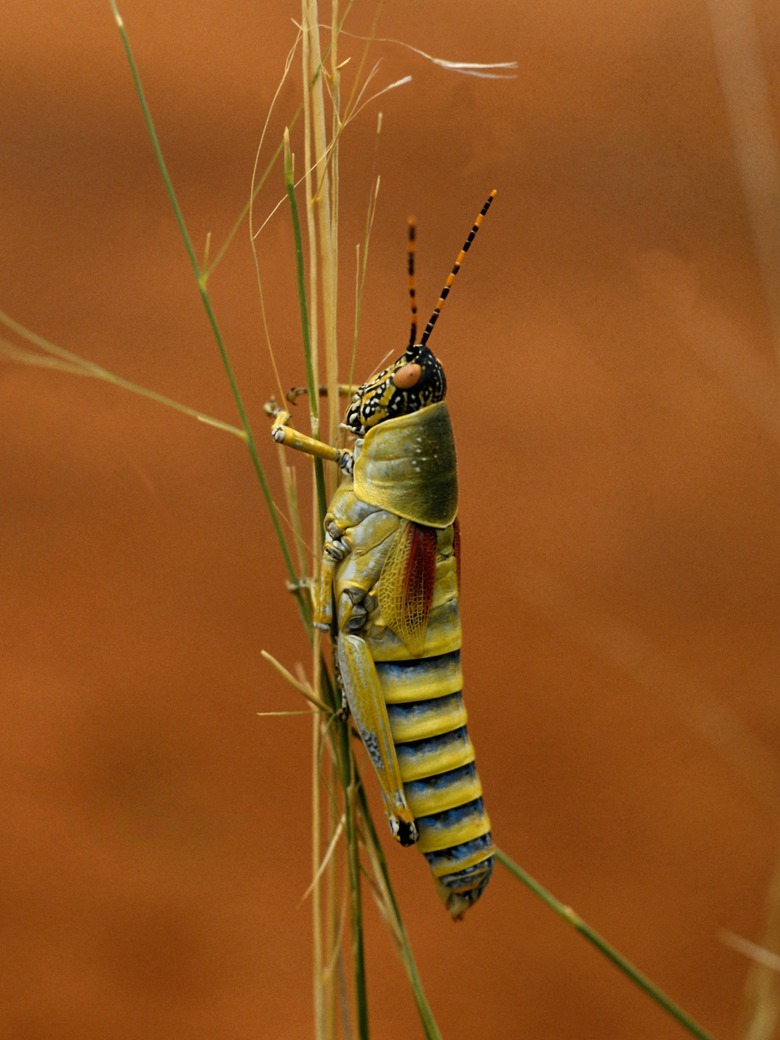What Happens When Something In A Food Chain Goes Extinct?
All living organisms hold a place in the food chain, structured around the transfer of life-sustaining energy through an ecosystem: from sunlight to plant to rabbit to bobcat to maggot, to make a simple example. Because this energy transfer involves members of the food chain interacting with one another and their environment in a complex, interlocking ecological system, extinction of one species can have a cascading effect on others.
Increased Population of Prey
Increased Population of Prey
When a predatory species becomes threatened or extinct, this removes a check and balance in the food chain on the population of prey previously consumed by that predator. Consequently, the prey population can explode. For instance, the huge increase in white-tailed deer populations in the central and eastern U.S. in the latter half of the 20th century likely stemmed partly from reduced or altogether eliminated populations of deer predators, namely wolves and cougars. Overbrowsing as a result of such excessive deer numbers can transform the makeup of plant communities and negatively impact forest regeneration.
Ripple Effect on Other Species
Ripple Effect on Other Species
Endangerment or extinction of one species can threaten the viability of another species. In Britain, for instance, the red ant population plummeted as the result of fewer sheep grazing in pastures; sheep had previously kept the grass short, the red ant's habitat preference. In turn, the paucity of red ants led to the extinction of a large butterfly species that eats red-ant eggs as part of its life cycle. Food chain disruptions from the loss of a single species can be ecosystem-wide, too: When sea otters decline, populations of sea urchins, a preferred otter food, can explode. The resulting overpopulation of kelp-munching urchins, meanwhile, can reduce kelp forests, threatening numerous marine species that rely on this habitat.
Reduced Biodiversity
Reduced Biodiversity
Overall ecosystem instability due to reduced biodiversity ranks among the consequences of species extinctions. As the number of species in a food chain decreases, there are fewer sustainable alternatives for members of the food chain that had depended on the extinct species. Biodiversity also lends genetic variability to a population, helping it adapt to fluctuating environmental conditions. For instance, a study of tropical rain forests in West Africa conducted by ecologists at Leeds University between 1990 and 2010 suggested that biodiversity mitigates the effects of climate change and helps tree species adapt to drought conditions.
Disrupted Habitat
Disrupted Habitat
Extinction of animal or bird species in the food chain may alter the physical environment as well. For instance, accidental introduction of the predatory brown tree snake to Guam wiped out 10 of the 12 native bird species on the island causing collateral damage to the forest, according to a University of Washington study. Biologists found that extinction of the birds had adversely impacted tree pollination, seed germination and seed dispersal. Without birds to spread seeds, there may only be a few clumps of mono-species trees in Guam's future, fundamentally changing forest habitat.
Cite This Article
MLA
Dowd, Mary. "What Happens When Something In A Food Chain Goes Extinct?" sciencing.com, https://www.sciencing.com/happens-something-food-chain-goes-extinct-18214/. 9 March 2018.
APA
Dowd, Mary. (2018, March 9). What Happens When Something In A Food Chain Goes Extinct?. sciencing.com. Retrieved from https://www.sciencing.com/happens-something-food-chain-goes-extinct-18214/
Chicago
Dowd, Mary. What Happens When Something In A Food Chain Goes Extinct? last modified August 30, 2022. https://www.sciencing.com/happens-something-food-chain-goes-extinct-18214/
